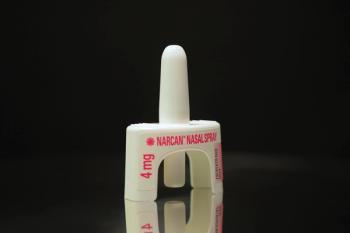
Irked by drug-interaction alerts? Customize them, experts advise
Students of pharmacology often hold an idealistic view of drug-drug interactions: If two drugs interact, they should not be used together. Unfortunately, life in the real world is not always so straightforward. In reality, every day pharmacists give patients drugs that have the potential to interact.
So how can pharmacists improve outcomes by reducing medication misadventures caused by drug-drug interactions? Are drug-interaction alerts unimportant and simply a waste of time? These and related topics were discussed in December at ASHP's 40th Midyear Clinical Meeting in Las Vegas. The discussion focused on a complicated topic, and one thing was clear-even the experts do not always agree.
According to David Juurlink, M.D., Ph.D., and pharmacist at Sunnybrook Hospital at the University of Toronto in Ontario, Canada, with hundreds of potentially interacting drugs, "No one can expect even the most diligent clinician to keep abreast of all the developments in the field." The complexity of drug-drug interactions is daunting and is bound to get even more difficult.
But, in actuality, a potential drug-drug interaction really does not matter at all; a drug-drug interaction becomes important only if it causes patient harm. That means the severity or significance of a drug-drug interaction depends upon the patient. And there is tremendous variability among patients. John Horn, Pharm.D., professor of pharmacy and associate director of the pharmacy department at the University of Washington Medical Center, said, "Normal variability in controlled studies with two [interacting] drugs is five- to sevenfold among patients."
Computer programs are currently unable to assess most factors that cause interpatient variability since computers fail to consider genetics, comorbidities, environment, use of nicotine or alcohol, drug dose, drug duration of administration, drug route of administration, drug formulation, and time of drug administration, to name a few of the confounding factors. To account for all of these variables, said Horn, one needs to stop relying on computer software and instead rely on the "computer that resides between your ears."
Annoying though they may be, computer-generated drug-drug interaction alerts do have value. Those alerts can enhance patient safety and improve knowledge. In clinical studies, it has been determined that prescribers actually appreciate the education the alerts provide because they learned new information about drug-drug interactions. According to John Murphy, Pharm.D., a professor in the pharmacy department at the University of Washington, "Prescribers are generally quite responsive to these discussions" of drug-drug interactions. But, he cautioned, when educating physicians about a drug-drug interaction, be prepared to offer an alternative drug that does not interact.
Pharmacist experts leading the discussion at the ASHP meeting believe that drug-interaction software should be updated to offer solid management advice. Instead of simply flagging an interacting pair of drugs, pharmacists would find software that offered alternative drug options quite beneficial.
Sometimes there are not alternatives, however, and an interacting pair of drugs must be given. How does a pharmacist manage drug-drug interaction alerts? Horn suggested a few basic strategies: (1) If possible switch to a different, noninteracting drug. (2) If there are not alternatives available, use pharmacokinetics to determine clearance, check blood levels, and estimate dosage changes to minimize the interactions. (3) Above all, monitor the patient! Patient monitoring enables drug-drug interactions to be caught before harm occurs.
Unfortunately, pharmacists see so many interactions flagged by their computer systems, that they become complacent to them. They often override them without even thinking. This occurs because computers tend to bombard pharmacists with a high percentage of clinically irrelevant alerts (i.e., a refill of a medication that the patient is currently tolerating, a drug that was discontinued three years earlier, topical administration of a drug). Murphy likened the drug-interaction alerts to the "cry wolf" syndrome.
According to Murphy, part of the problem with the alerts could be overcome if pharmacists could customize alerts and make it difficult or impossible to override potentially life-threatening alerts. But there is even some discrepancy about which alerts fall into that category. For example, 406 major potential drug-drug interactions were identified from four different compendia. (Note: This analysis focused on drug-drug interactions classified by the compendia as major; it did not include moderate or minor interactions.) Yet only nine of these drug-drug interacting pairs were listed in all four of the compendia, and only 35 major drug-drug interactions were listed in three of the four compendia.
Why the discrepancies? These inconsistencies result, in part, from the lack of an international classification system for rating drug-drug interactions. Different computer systems use vastly disparate rating scales for drug-drug interactions. What may be listed as a major drug-drug interaction based upon a particular adverse event in one compendia may be rated as a moderate or minor interaction by another reference text. Other rating scales may be based on the level of documentation available for a particular adverse event (i.e., an interaction reported in a single case report may not be rated as severe as an interaction that is better documented for which the mechanism is widely understood).
According to Horn, much of the problem stems from "an attempt to simplify something that is actually quite difficult." He suggested that software should be easily modifiable. He believes that pharmacists should be able to switch drug-drug interactions into different levels of severity, based upon personal tolerance for a particular set of interacting drugs-something that may differ for each pharmacist, depending upon the patient care setting and patient populations served.
While the ASHP-sponsored drug-drug interaction discussion identified several differing attitudes and opinions on the part of pharmacists, there did seem to be agreement that software improvements are needed. The speakers noted, however, that computer programmers who make those types of changes typically do not attend ASHP meetings to hear the needs of pharmacists, who are served by their products.
THE AUTHOR is a writer based in the Philadelphia area.
Newsletter
Pharmacy practice is always changing. Stay ahead of the curve with the Drug Topics newsletter and get the latest drug information, industry trends, and patient care tips.





















































































































































